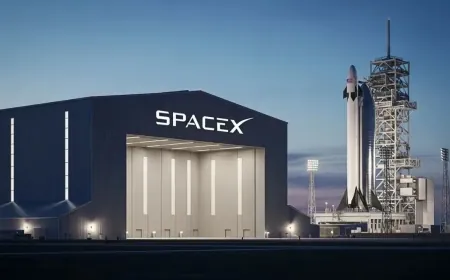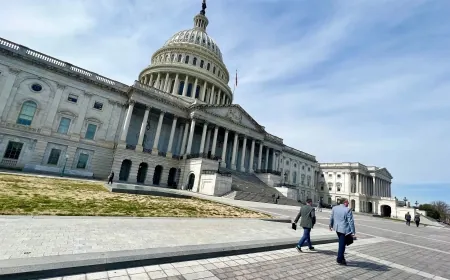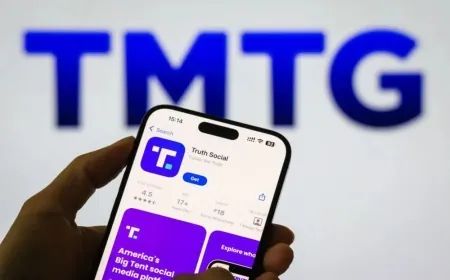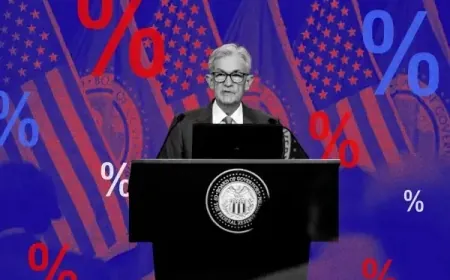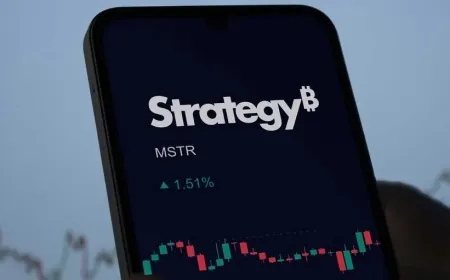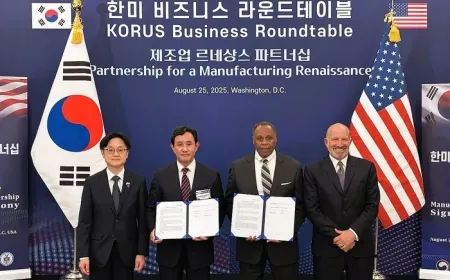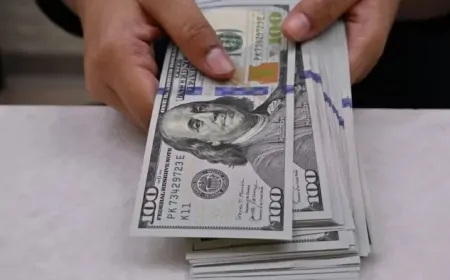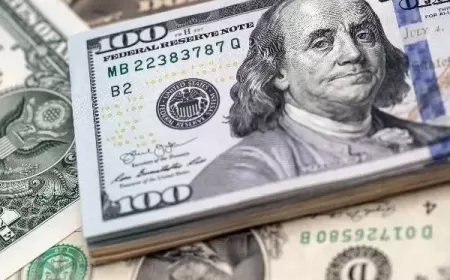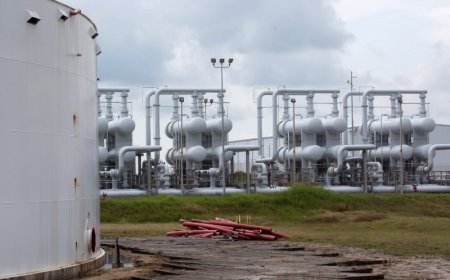U.S. Announces New Import Tariffs on 66 Countries, Impacting Consumer Prices and Trade
The U.S. has announced new tariff rates on imports from 66 countries, including the EU, Taiwan, and Switzerland, with some rates as high as 40%. The changes are expected to affect consumer prices, trade deals, and key industries like food, apparel, and automobiles.

The Trump administration has officially initiated a sweeping overhaul of U.S. trade policy with a fresh round of import tariffs impacting goods from 66 countries, including major partners like the European Union, Taiwan, and Switzerland. The policy, disclosed late Thursday, assigns varying tax rates on a wide range of imports—from a steep 40% on Laos to 30% on South African products. Some countries, including Cambodia, saw their rates reduced from earlier proposals, reflecting a more selective approach than originally anticipated.
While the tariffs were scheduled to take effect immediately, the administration has delayed their implementation until August 7, giving businesses a narrow window to adjust operations or accelerate shipments.
Diverging Views on Tariff Consequences
Wendong Zhang, associate professor at Cornell University’s Dyson School, said the final rates—although still substantial—are less severe than earlier threats, which may soften the immediate impact on U.S. households. “Prices are still going up,” Zhang explained, “just not as sharply as in a worst-case scenario.”
That said, the fundamental truth remains: tariffs are a form of taxation, and consumers will bear part of the cost, whether directly at checkout or through diminished product availability.
Timeline of Trump’s Recent Tariff Actions
The tariff overhaul began in April, when Trump proposed widespread import taxes aimed at promoting domestic manufacturing and rebalancing global trade. Though he initially included nearly all countries in the scope of these tariffs, a 90-day pause was granted in May. Since then, negotiations with various trade partners have continued behind closed doors.
This week’s announcement provides the most concrete outline of the administration’s intentions, although the terms continue to shift. Canada faces a 35% tariff starting Friday, while Mexico and China have received temporary reprieves amid ongoing talks. Earlier tariffs on key materials like aluminum and steel, set at 50%, remain unchanged.
New Tariff Rates by Country
Deals struck with the EU, Japan, South Korea, and others have resulted in tariffs ranging from 15% to 25% on specific imports. For example:
| Country/Territory | Tariff Rate | Effective Date |
|---|---|---|
| Laos | 40% | August 7, 2025 |
| Switzerland | 39% | August 7, 2025 |
| South Africa | 30% | August 7, 2025 |
| India | 25% | August 7, 2025 |
| Brazil | 50% | August 7, 2025 |
| Vietnam | 20% | August 7, 2025 |
| Philippines | 19% | August 7, 2025 |
| Canada | 35% | August 1, 2025 |
| Compiled by iShook Finance | ||
Note: Tariff data sourced from the U.S. Executive Order (July 31, 2025) and USTR correspondence. For full details and the complete Annex I, refer to whitehouse.gov and official government releases.
These rates are layered on top of broader material-specific duties, complicating the cost structures for U.S. manufacturers and retailers.
Consumer Goods Already Seeing Price Increases
The Department of Commerce reported a 2.6% inflation rate for June, a rise from May’s 2.4% and notably higher than the Federal Reserve’s 2% target. Economists point to tariffs as a key driver. Sectors relying on steel, aluminum, or foreign-sourced parts—including home appliances, furniture, and electronics—are already seeing price adjustments.
However, Zhang noted that companies began preparing months in advance. “Many firms stockpiled inventory ahead of the deadline or secured alternative suppliers to minimize immediate cost increases,” he said.
Who Might Benefit from the Tariffs?
Despite the added costs, some American industries stand to gain from the restructured trade terms. Semiconductor companies, defense contractors, and energy producers may find new export opportunities.
For instance, under the deal with the EU, European firms are expected to buy $750 billion in American natural gas, oil, and nuclear fuel over the next three years. Vietnam, meanwhile, committed to importing $2 billion worth of U.S. agricultural goods—corn, soybeans, and wheat among them.
Still, Zhang warned that such benefits may be temporary. “Agricultural trade deals, in particular, tend to be unstable. As the political climate shifts, countries like China could look elsewhere for food security.”
Food and Beverage Prices Expected to Climb
A report from the nonpartisan Tax Foundation projected higher food costs for U.S. households as a result of the new trade measures. Items that the U.S. doesn’t produce in large quantities—like coffee, bananas, fish, and alcohol—will likely see price hikes.
The effect is already being felt by brands like Conagra, maker of Hunt’s and Reddi-wip, which expects to incur $200 million in additional costs annually due to tariffs. While the company is revising supplier contracts, it also confirmed it will pass some of that cost to consumers.
In the beverage sector, the wine market is already adjusting. Ben Aneff, president of the U.S. Wine Trade Alliance, said customers should expect a 20–25% price increase due to the 15% tariff and weaker dollar. “Nobody can afford to eat the tariff,” he said. “It gets passed on.”
European wine, in particular, is expected to jump 30% by September, after retailers exhaust early-year shipments made in anticipation of the tax increase.
Clothing and Shoe Prices Begin to Climb
The American Apparel & Footwear Association reports that 97% of U.S. clothing and shoes are imported, mostly from Asia. China, while still dominant, is seeing competition from Vietnam, Indonesia, and India as companies seek to diversify sources.
Prices are already creeping up. Retailers like Lululemon and Ralph Lauren have acknowledged they’ll raise prices in the coming seasons. Footwear executives project 5–10% increases, particularly in time for the back-to-school shopping period.
Steve Lamar, CEO of the AAFA, said that beyond direct price hikes, customers might see fewer product promotions or reduced product ranges as companies cope with increased costs.
Auto Prices Stay Flat—For Now
So far, automakers are taking a wait-and-see approach. Ferrari, for example, implemented a 10% surcharge in April and is holding that rate pending details of the EU trade deal. Other manufacturers have been more cautious, absorbing the initial costs in hopes of policy changes.
According to Kelley Blue Book, average new car prices rose just $108 from May to June, standing at $48,907. However, General Motors warned that tariffs could hit harder in the third quarter, with projected costs ranging from $4 billion to $5 billion annually.
Ongoing Impact: Prices Rising, Uncertainty Remains
The effects of the new tariffs are already being felt in several sectors, but the broader picture is still evolving. With key trade negotiations still underway—particularly with China and Mexico—businesses remain cautious about long-term planning.
Some companies are absorbing added costs temporarily, while others have begun raising prices or cutting back product lines. Industries like food, wine, clothing, and electronics are among the most exposed due to their reliance on imports. Consumers will likely see a steady climb in prices heading into the fall and holiday seasons.
At the same time, the threat of retaliation from trading partners, combined with ongoing supply chain adjustments, adds to market uncertainty. While certain U.S. industries like agriculture and energy may benefit from export provisions, the lasting economic outcome depends heavily on whether these deals hold—and how other countries respond.
Also Read: Trump Plans to End Federal Income Tax, Replace It With Tariffs






